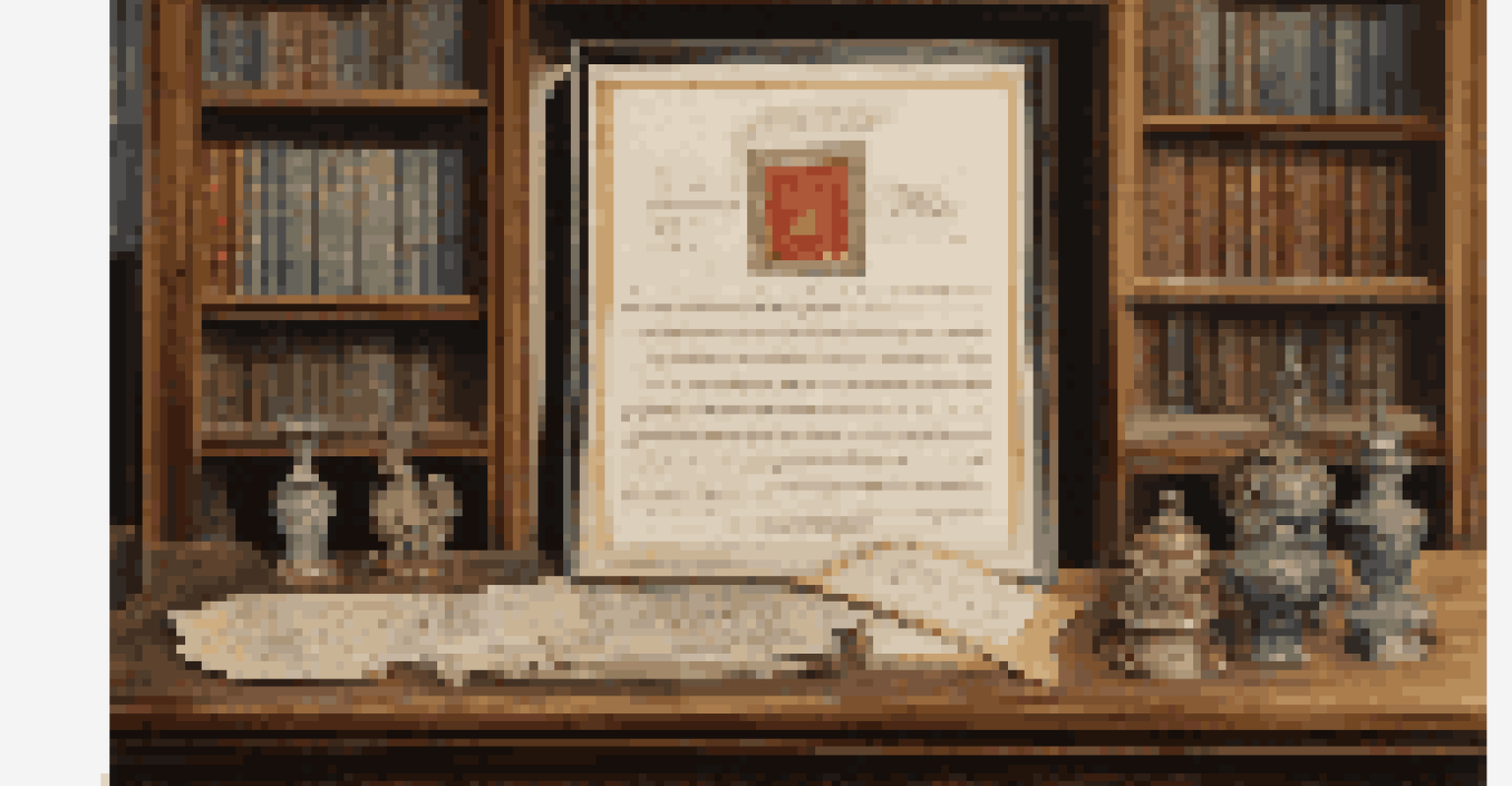Understanding Provenance: The Journey of Art and Collectibles

What is Provenance and Why It Matters in Art
Provenance refers to the history of ownership of a piece of art or collectible. It tells the story of where the item has been, who has owned it, and its journey through time. Understanding provenance is crucial because it can greatly impact the value and authenticity of the item.
Art is the most beautiful of all lies; it is a true expression of the human spirit through time and space.
For instance, a painting by a famous artist that has a clear and documented ownership history is likely to be valued much higher than one without such a background. Collectors and investors often seek pieces with strong provenance, as it provides assurance regarding the work's legitimacy.
Additionally, provenance can uncover fascinating stories about the artwork itself, revealing insights into the artist's life or the cultural context of the piece. This narrative enhances the emotional connection between the collector and the art.
The Role of Documentation in Provenance
Documentation is key to establishing provenance. This can include receipts, auction catalogs, gallery records, and exhibition history. Each document adds a layer of credibility to the piece, helping to trace its path from creator to current owner.

For example, if an artwork is sold at auction, the auction house typically provides a detailed history that can serve as a reliable reference for future buyers. This not only helps in verifying authenticity but also provides an essential context for the art's significance.
Provenance Impacts Art Value
The history of ownership significantly influences the value and desirability of art pieces.
However, it's not just about having documents; the quality and reliability of these records matter. A well-documented piece with reputable sources can command a higher value than one with incomplete or questionable provenance.
How Provenance Affects Value and Market Trends
The value of art and collectibles is inherently tied to their provenance. Pieces with a rich history or high-profile previous ownership often sell for much more than similar items without such a pedigree. This is why provenance can be a game-changer in the art market.
The story of art is the story of humanity, and provenance is the thread that connects us to our past.
Trends also come into play, as buyers may gravitate towards works with notable historical significance or those linked to famous collectors. For example, if a particular artist's work gains popularity, pieces with documented provenance may see a surge in demand and price.
Moreover, provenance helps in assessing market trends over time. Collectors can analyze past sales and ownership to make informed decisions about future purchases or investments.
The Impact of Forgery on Provenance
Forged artworks pose a significant challenge to provenance. As the market for high-value art grows, so does the risk of encountering fake pieces, making the verification of provenance even more critical. A forged piece can not only mislead buyers but also tarnish the reputation of galleries and auction houses.
Many collectors have fallen victim to forgeries, emphasizing the need for thorough research and due diligence. This often involves expert appraisals, scientific testing, and cross-referencing with existing provenance records.
Documentation is Essential
Reliable records like receipts and auction catalogs are crucial for establishing provenance and authenticity.
To combat forgery, the art world is increasingly turning to technology, such as blockchain, to create immutable records of ownership. This innovation aims to enhance trust in provenance and reduce the risk of fraud.
The Evolution of Provenance in the Digital Age
The digital age has transformed how provenance is recorded and accessed. Online databases and digital catalogs allow collectors and enthusiasts to trace the history of artworks with unprecedented ease. This accessibility can democratize the art world, making provenance information available to a broader audience.
Moreover, social media platforms have become vital for artists and collectors alike. Sharing stories and histories behind artworks has never been easier, fostering community engagement and interest.
However, this shift also raises concerns about misinformation. As more people share art online, it becomes crucial to verify information and ensure that provenance claims are accurate and trustworthy.
Cultural Significance of Provenance in Art
Provenance is not just about ownership; it also reflects cultural heritage and societal values. The journey of an artwork can highlight historical events, cultural shifts, or even social movements. Understanding provenance allows us to appreciate these dimensions and the broader context of the art.
For instance, artworks that have been part of significant exhibitions or movements can tell stories of their time, providing insights into the artist's intentions and societal influences. This connection enriches our understanding of the piece beyond its aesthetic value.
Digital Age Transforms Provenance
Online resources and social media have made provenance information more accessible, but they also raise concerns about misinformation.
Additionally, provenance can play a role in repatriation debates, where the rightful ownership of culturally significant artifacts is contested. These discussions emphasize the importance of ethical considerations in the art world.
How to Research Provenance Effectively
Researching provenance can seem daunting, but it doesn't have to be. Start by gathering any existing documentation related to the piece, such as purchase receipts or exhibition catalogs. This foundational information can guide further inquiries into the artwork's history.
Next, utilize online resources, including auction house archives and art databases, to uncover additional details. Many institutions offer digital access to their records, making it easier than ever to trace ownership histories.

Finally, consider consulting with experts or appraisers who specialize in your artwork's genre. They can provide valuable insights and help you navigate the often complex world of provenance.